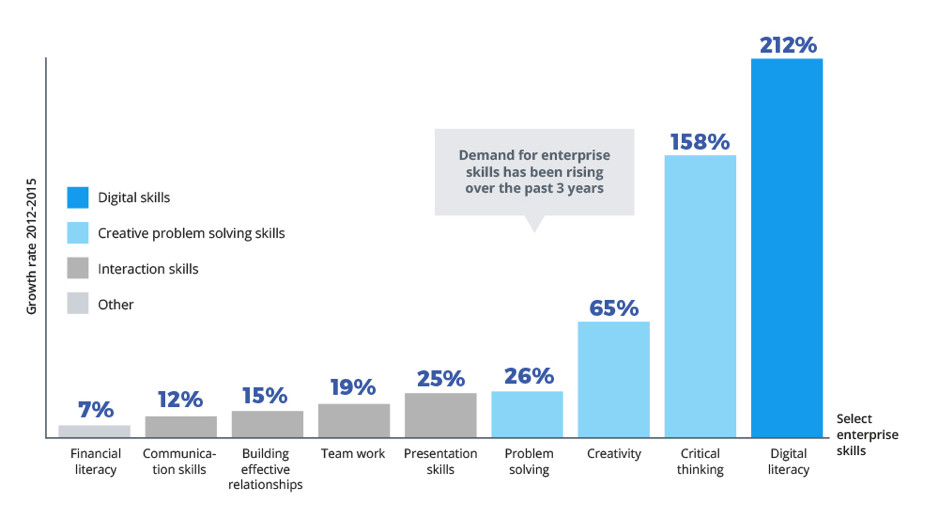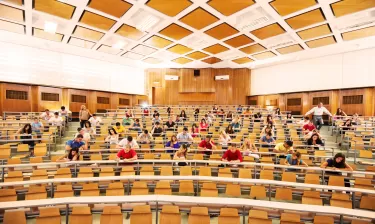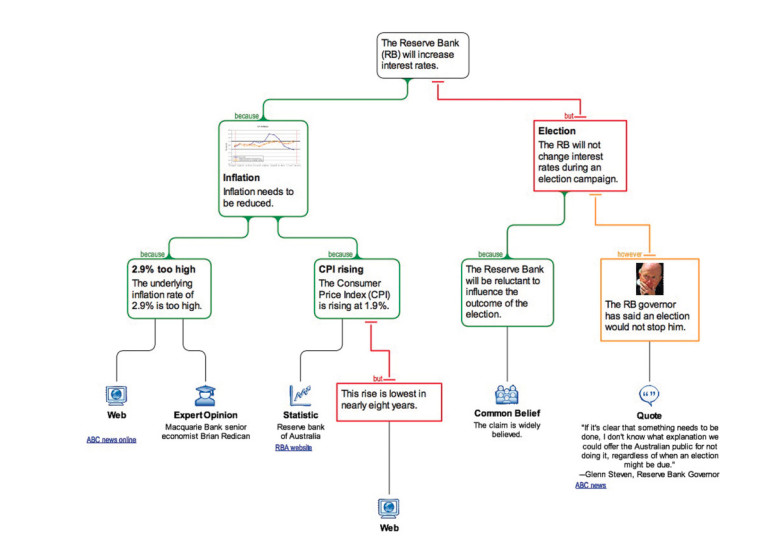
Politics & Society
Our kids are missing out on critical thinking

One of the key aims of universities is to arm students with critical thinking skills, but many are failing. Could technology be the answer?
Published 8 January 2018
Every day, we face complex issues about which we must weigh evidence and come to conclusions. These issues involve many arguments on all sides of difficult debates.
But they also involve understanding those arguments and having the ability to make objections and provide rebuttals to those objections.

This is critical thinking.
Recently, there’s been a focus on the increasing importance of critical thinking skills for future employment.
The Foundation for Young Australians 2015 report, The New Basics, claims that demand for critical thinking skills in new graduates has risen 158 per cent in three years.
This data was drawn from an analysis of 4.2 million online job postings from 6000 different sources in the period 2013-2015.
A major purpose of a university education— regardless of subject matter—is to teach students how to read, understand, and respond to complex arguments.

Politics & Society
Our kids are missing out on critical thinking
The ability to do this makes for highly employable, adaptable, and reflectively critical individuals.
But are we teaching critical thinking, a skill valued by employers, to the next generation effectively?
In the US media recently, there was a heightened concern about the teaching of critical thinking in universities.
This was sparked by a recent large-scale study using Collegiate Learning Assessment data in the US, and reproduced in a provocative and much-discussed book, Academically Adrift: Limited Learning on College Campuses.
The book provoked widespread interest and media attention in the US, especially on the topic of universities’ failure to teach critical thinking.

The study tracked the educational development of a range of skills of 2,322 American college students from 2005 until 2009.
It established that 45 per cent of students made no significant improvement in their critical thinking or reasoning skills during the first two years of college.
Thirty six per cent made no significant improvement after an entire four-year college degree.
The students who were tested could not, after completing a university course of study, sift fact from opinion.
They couldn't clearly present an objective review of two or more conflicting reports or determine a cause of an imaginary problem without being influenced by persuasive rhetoric and emotional blackmailing.

Business & Economics
Our business leaders must think critically
This was a disturbing finding, and one that placed in serious doubt the assumption that critical thinking was being adequately taught on American college campuses.
It created a storm of discussion in the popular media.
This view has been challenged – but regardless, the issue has been raised in the public consciousness.
And we have no evidence to suggest that Australian campuses are any different.
In a way, this deficiency is not surprising.

While universities like to think they teach critical thinking, seldom is this done explicitly.
It is more a case of instructors teaching normal course content with the expectation that students will cultivate the ability to “think critically” by osmosis somehow.
There is no time in crowded curricula to take time out to teach critical thinking (exceptions being courses in informal logic and reasoning where this is done explicitly).
Everyone is far too busy. Come the end of semester, the requirement to cultivate the graduate attribute of critical thinking is perfunctorily ticked off. Of course it was taught.

Upon graduation, students themselves have a vested interest in being seen as good critical thinkers—so they don’t rock the boat.
No one likes to complain that they were not taught to think critically: this reflects on themselves as students as much as the institution concerned.
So, sleeping dogs are left to lie exactly where they are.
But is there a solution? And does it lie with innovative technology?
Learning well-grounded skills in critical thinking is surprisingly difficult. The human brain simply cannot encompass at one time all aspects of a complex debate.

Maps and mapping have been used for educational purposes for many years. That is nothing new.
What is new is a variety of software packages that permit more complex forms of map-making. These software programs take advantage of computational power to enhance and augment the natural processing limitations of the human brain.
A variety of argument-mapping software are now available, from the subscription-only Rationale to the open source MindMup.
So, what is argument mapping? It’s a process that involves clearly outlining a contention at the top of a map, followed by tiers of reasons and objections; and is used as a visual tool that help in understanding, assessing, and evaluating arguments.
But now, traditional argument mapping can be enhanced by computer-aided argument mapping (CAAM) software that aids the mapping process.

Arts & Culture
Cross-examining western thinking
And research has found that something very interesting is happening on this front.
It has been shown empirically using experimental and control groups of students (in pre-test, post-test trial) that groups spending a semester manipulating argument maps considerably improved their critical thinking skills.
This was measured by an independent test, the California Critical Thinking Skills Test. The improvement in 10 weeks was about as much as one would expect over an entire four-year degree.
And this has been replicated.
Some studies suggest the gains in critical thinking using argument maps is triple that of other ways of improving critical thinking.

One paper showed that gains occur even after a minimal intervention with argument maps; a ‘one shot inoculation’ in a one-hour tutorial discussion within a subject of study.
This approach appears to have much promise.
The inclusion of argument mapping in this way has few apparent disadvantages and many possible advantages.
Given the documented advantages of argument mapping – and the apparent failure of universities to impart critical thinking skills – including it in the curriculum seems an obvious course of action for modern educational institutions in the 21st century.
The important thing is that critical thinking does need to be taught, and we need to ensure graduates emerge being good at it.
One thing is certain: the arrival of these tools is timely, as students are leaving universities without perhaps the most important skill of all: critical thinking.